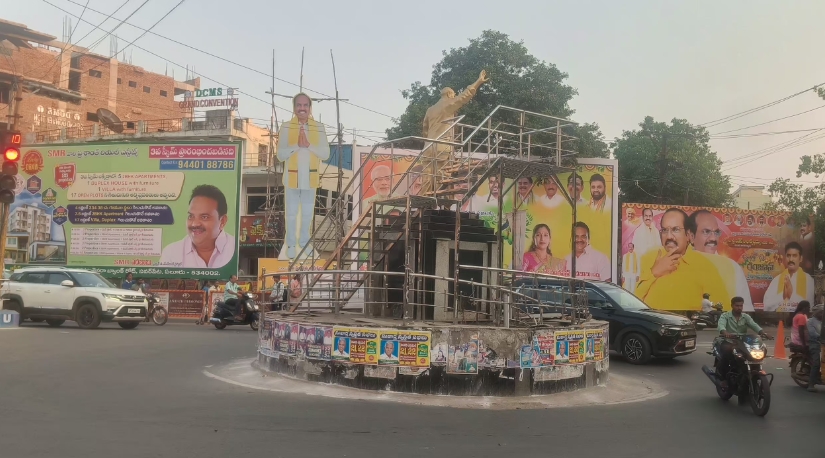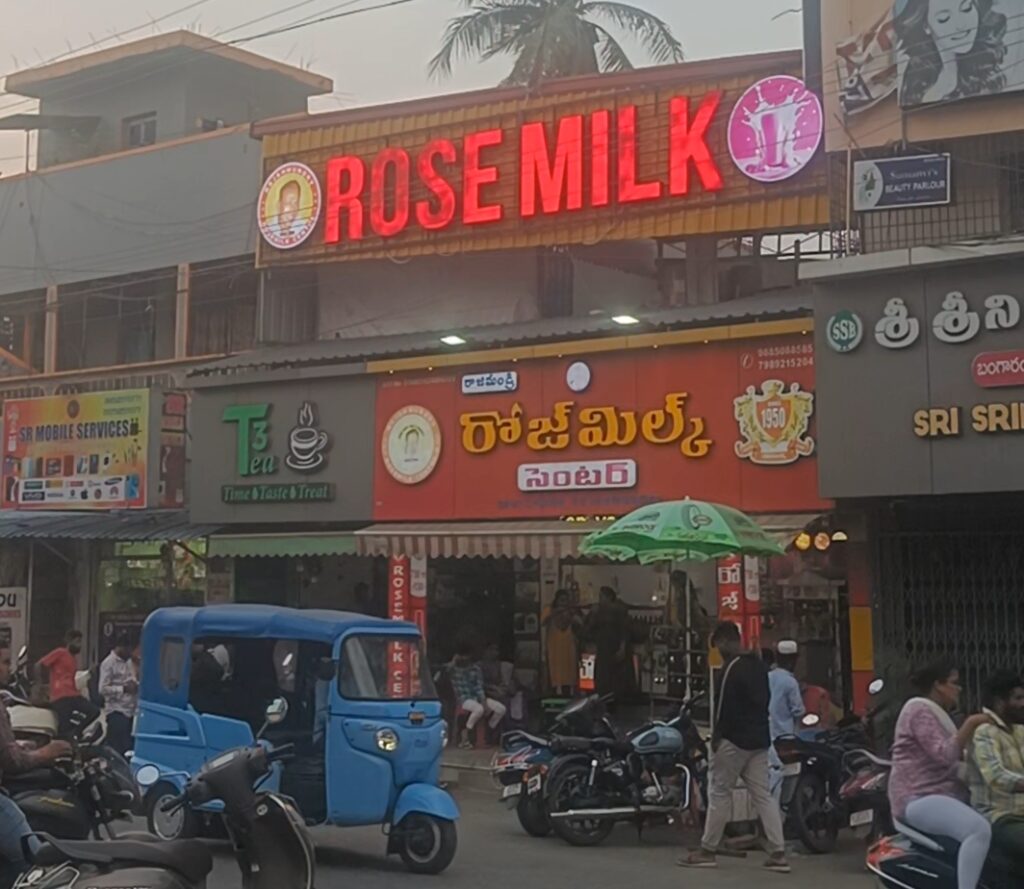Read this before travelling to Andhra Pradesh
After exploring Telangana previously, I was struck by the similarities Andhra Pradesh shared with its neighboring state. However, as I traveled through Andhra Pradesh, I noticed distinct differences. One of the most notable contrasts was the state’s advanced development, particularly its impressive road network. The regions surrounding the Godavari and Krishna rivers were remarkably well-developed, with thriving agriculture.
I also observed a difference in the way people communicated. In northern Andhra Pradesh, locals spoke in a more respectful tone, often using plural notation to address each other. This was a departure from my experience in Telangana.
In terms of religion, while Hinduism dominated both states, Andhra Pradesh had a larger Christian population, whereas Telangana had a more significant Muslim presence.
But what truly sets Andhra Pradesh apart is its culinary prowess. Known for its spicy and flavorful cuisine, the state is renowned for serving some of the tastiest food in India.
This article is a personal account of my experiences and observations in Andhra Pradesh. I acknowledge that my travel style and personality may have influenced my perceptions, and I encourage readers to approach this information with a critical perspective. I invite you to share your insights and experiences in the comments below, helping to build a more comprehensive understanding of this incredible state.
Demography
Andhra Pradesh can be broadly divided into four regions: the northern Srikakulam region, the central Godavari/Krishna region, the Rayalaseema region, and the coastal region. The Godavari/Krishna region stands out due to its perennial rivers, making it an ideal location for cultivation and earning the title of the state’s “rice bowl.” This region’s fertile land and favorable climate have also contributed to Andhra Pradesh becoming India’s largest farm fish producer. The area is home to high-quality prawn hatcheries, some of which export to international markets.
The state is home to several prominent communities, including the Reddys, Kamma’s, and Kapu’s. The Reddys and Kamma’s have a strong presence in business, with the Reddys dominating the rice mill and poultry farming sectors, while the Kamma’s have a significant presence in the automobile, education, and food industries. The Kapu community, primarily found in the southern regions, is predominantly involved in farming and nursery businesses.
However, the poultry industry has faced challenges due to decreased demand from states like West Bengal and Assam, where local poultry industries have emerged. As a result, the Kamma community’s influence appears to be growing, with some attributing this to their pride and entrepreneurial spirit.
In terms of demographics, Hindus form the largest majority in Andhra Pradesh, followed by Christians, who are the second-largest community, unlike neighboring Telangana where Muslims are the second-largest community. There has been a notable increase in Christianity in Andhra Pradesh, particularly in the coastal regions, due to conversions among backward class communities. Many pastors belong to Scheduled Caste (SC) backgrounds, and some have reportedly accumulated significant wealth, raising questions about the ethics of conversions.
Government
Andhra Pradesh presents an intriguing paradox: despite observing relatively lower levels of casteism at the grassroots level compared to many northern states, caste has been strategically leveraged in politics as a votebank. Both religion and community affiliations have played significant roles in shaping votebank politics in the state. This is reflected in the dominance of certain communities in political leadership, with 14 Chief Ministers hailing from the Reddy community, followed by 6 from the Kamma community, while the Kapu community has yet to produce a Chief Minister.
The film industry, however, tells a different story, with Kamma and Kapu communities holding significant sway. The influence of N.T. Rama Rao (NTR), a renowned actor-turned-politician from the Kamma community, marked a turning point in the 1980s, as Kamma’s began to assert themselves in politics. The media agency Eenadu, a major newspaper supplier in Andhra Pradesh, has been instrumental in shaping public perceptions, particularly of Kamma leaders. Some argue that Chandrababu Naidu’s reputation owes more to his marketing acumen than actual state development.
The ongoing debate about the capital city, Amaravati, which was chosen after the bifurcation of Andhra Pradesh and Telangana, remains contentious. Critics argue that Amaravati and Vijayawada are fertile lands, and the decision to develop Amaravati as the capital may not be the most practical. The previous government led by Jagan Mohan Reddy faced criticism, with some attributing his removal to his religious views, although the situation appears more complex.
One notable aspect of Andhra Pradesh is the high level of interest in politics among its people. Political banners are ubiquitous, often outnumbering advertising banners for commodities. This suggests a deeply engaged citizenry, where politics is a subject of significant interest and discussion.

People
The people of Andhra Pradesh are a unique blend of warmth, simplicity, and enthusiasm. Known for their jovial and fun-loving nature, they bring a spark to every interaction. Their love for movies and cricket is palpable, with fans often displaying extreme dedication to their favorite stars and teams. The people of Andhra Pradesh are also known for their love for being photographed, especially on the beachside, and their fanaticism is evident in the way they stick to their favorite things or people.
One of the defining characteristics of Andra women is their toughness and strong work ethic. They are often seen working alongside men in stalls and shops, showcasing their resilience and determination. The people of Andhra Pradesh are also known for their respectful nature, with a strong emphasis on human relationships and sentimental values.
Despite the competitive nature of the society, which drives individuals to strive for wealth and success, the people of Andhra Pradesh believe that competition is a catalyst for development. This competitive spirit is balanced with a sense of simplicity and contentment, as they focus on enjoying the little things in life.
Interestingly, the state has a strong taboo against weed and drugs, and smoking and tobacco chewing are relatively rare. The people of Andhra Pradesh are also known for their honesty, with a strong sense of integrity that makes them trustworthy in business transactions.
When it comes to family, kids are pampered and often look up to their fathers as heroes. While there may be some challenges, such as riding cases of divorce and the ever continuing dowry system, the people of Andhra Pradesh are generally peaceful and happy, with a strong sense of community and social bonding. Their love for life and its simple pleasures is reflected in their huge bellies, a symbol of ample wealth and comfortable living.
Culture
Andhra Pradesh’s culinary landscape is a reflection of its vibrant culture, with a predominantly non-vegetarian cuisine that is renowned for its bold flavors and spices. The people of Andhra Pradesh are self-proclaimed foodies, and their love for good food is evident in the way they relish every bite. The prevalence of large bellies among the locals is a testament to their love for rich and flavorful food, which often features tamarind and spices as key ingredients. Andhra Pradesh is indeed known for having some of the spiciest and most flavorful cuisine in the country.

Beyond the food, Andhra Pradesh’s culture is characterized by a strong sense of respect and community. The women of Andhra Pradesh are known for their toughness and resilience, and the way people address each other with affectionate terms like “annayya” (elder brother) and “tamudu” (younger brother) reflects the warmth and camaraderie that pervades the society. The state also has a notable presence of social welfare groups, such as orphanages, which highlights the sense of community and social responsibility.
However, Andhra Pradesh also faces some challenges, particularly in terms of sanitation and hygiene. Open defecation is a significant issue, even in well-developed towns, and littering is a common problem. People often discard waste without much thought for cleanliness, which can be quite concerning.
On the economic front, Andhra Pradesh appears to be a developed state, with expensive bikes and cars being a common sight. Even in rural areas, people seem to have access to comforts and amenities, hinting at a good quality of life. The state’s economic prosperity is reminiscent of Gujarat, another developed state in India. Overall, Andhra Pradesh’s unique blend of culture, cuisine, and community makes it a fascinating place to explore.
My journey through Andhra Pradesh was a truly enriching experience, filled with delightful culinary discoveries and warm interactions with the locals. Like any other state, Andhra Pradesh has its strengths and areas for improvement. If you spot any inaccuracies in my article, I’d love to hear from you – please feel free to comment below. If you enjoyed this piece, I’d be thrilled if you explored more of my writings on this page.
I am a 31 year young PhD graduate who has decided to travel the length and breadth of India on my cycle, to document the journey of meeting a vast array of people. In my journey, I intend to understand the characteristic features of the people of this nation and categorize them based on their demographics, age, profession, gender, traditions, and cultural differences.